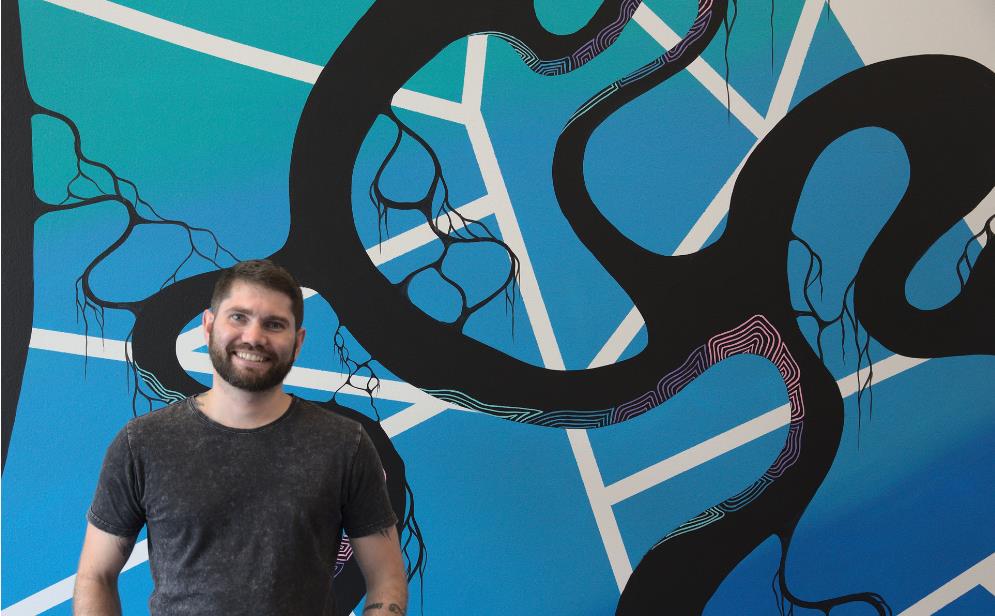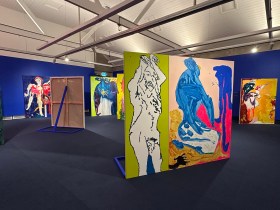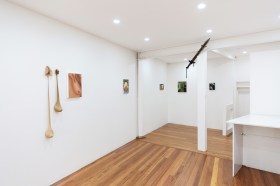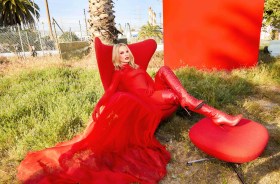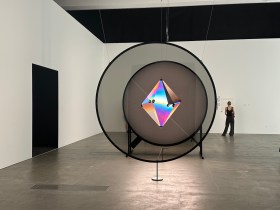The Shepparton Art Museum (SAM) is preparing for a big, bright, and bold future when it re-opens at its new $50 million purpose-built home later this year. But even before its physical opening, there’s still work to see, including digital exhibitions online and the dramatic Drawing Wall in the foyer of Riverlinks Eastbank, located just outside the old Shepparton Art Museum.
Troy Firebrace’s work Drawing Wall work, Induction (2021) was inspired by the artist’s experiences growing up with his family in Shepparton and on the banks of the Dungala (Murray River) and Kaiela (Goulburn River). Using geometric designs that seem almost digital in appearance, Firebrace depicts something very real – the country and landscape that we inhabit. He asks the viewer to stop and look, to connect to our surroundings, rather than our digital devices.
Firebrace said: ‘Think about the sounds, smell and feelings that you might experience out on Country, whether it’s on the Murray or the Goulburn River just behind this building. I ask for you to walk within two worlds.’
Moorina Bonini’s Australian Melting Pot (2018) is a digital exhibition presented in partnership with Blak Dot Gallery and NETS Victoria. Bonini said the video work demonstrates an intentional action undertaken to understand the construct of the Australian identity. Through uncovering, re-learning and mixing together, the perfect identity stew is presented to the viewer.
‘Australian Melting Pot takes a poignant look at identity in Australia and the many determining factors that shape our perceptions about who we believe we are,’ said SAM’s Curator (Indigenous) Belinda Briggs.
‘Moorina presents her audience with a complex recipe of ingredients including historical events, intergenerational and cultural influences, and environmental factors like societal attitudes and the media. Moorina’s familial and Ancestral ties as a Yorta Yorta woman localise her work in SAM’s regional boundaries and at home on Yorta Yorta Country.’
Moorina Bonini is a proud descendant of the Yorta Yorta Dhulunyagen family clan of Ulupna and the Yorta Yorta and Murundjeri-Woiwurrung Briggs/McCrae family. Her works are informed by her lived experience as an Aboriginal and Italian woman. As an artist, she uses a self-reflexive methodology that enables the re-examination of the experiences that have influenced the construction of her own cultural identity. Her art practice is based within Indigenous knowledge systems and brings this to the fore, seeking to unsettle the narrative placed upon Aboriginal people as a result of the colonisation of Aboriginal Australia.
The Aboriginal and Torres Strait Islander Art collection at SAM aims to reflect the breadth and diversity of art practice from across Australia, with a particular focus on artists from South East Australia. SAM acknowledges and celebrates the oldest continuous living culture through the acquisition of artworks by artists with a connection to the Yorta Yorta Country on which it is located.
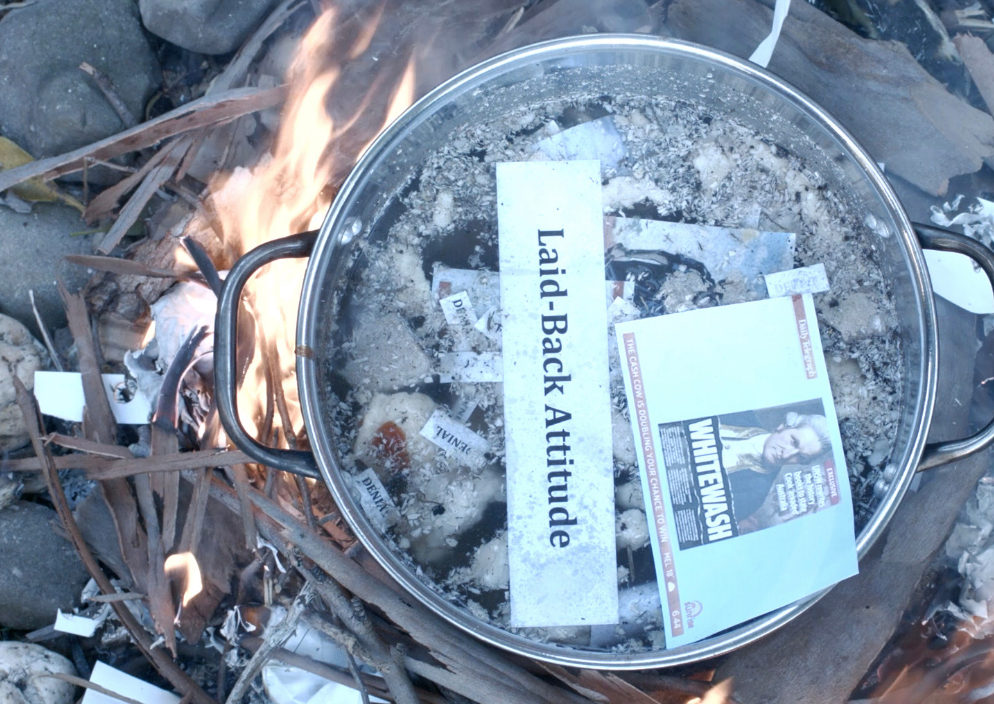
Moorina Bonini’s Australian Melting Pot
‘One of the driving principles of our curatorial approach at SAM is to showcase the work of South-East Australian Aboriginal artists within a national context,’ Senior Curator Shelley McSpedden explained. ‘That means working with, showcasing, celebrating and supporting Aboriginal artists and community members from the region and beyond.’
SAM’s permanent collection of some 4,000 items includes an expanding collection of Aboriginal and Torres Strait Islander art.
‘We want to use our incredible collection of Indigenous art to drive the national dialogue surrounding the importance of Aboriginal arts practice, and be a truly welcoming space for the Goulburn Valley region’s First nations people,’ McSpedden said.
The collection is growing thanks to SAM’s acquisitive biennial Indigenous Ceramic Award and the gift of the Carrillo and Ziyin Gantner Indigenous Art Collection. SAM also holds a unique collection of Aboriginal and Torres Strait Islander ceramics, many from artists in remote communities, including work by the late Dr Thanacoupie Gloria Fletcher AO, the Hermannsburg Potters, Janet Fieldhouse, and Danie Mellor.
‘We are committed to making SAM a culturally safe and inclusive environment, through meaningful and reciprocal relationships with Aboriginal and Torres Strait Islander artists and communities. We are in the process of establishing SAM’s Aboriginal Engagement Plan, which is being co-designed by the local community, with the aim of ensuring an “Aboriginal voice to SAM”,’ said McSpedden.
A trainee program for local Indigenous youth at SAM was announced recently as part of a $265 million federal government funding package. Two trainees will be taken on in both 2021 and 2022. They will assist in the development and delivery of the residency and engagement programs. A new Indigenous staff member will also be appointed as the trainee program co-ordinator.
The new SAM will also be the home of Kaiela Arts, an important local Aboriginal arts organisation and gallery. This co-location offers SAM and Kaiela Arts many exciting opportunities to partner on projects together.
‘Our inaugural exhibition program in our new purpose-built venue will have a big focus on local South-East Australian Aboriginal artists, alongside Indigenous artists from around Australia,’ McSpedden said.
‘Our ambition is that new SAM becomes a flagship for working with local Aboriginal communities’.

